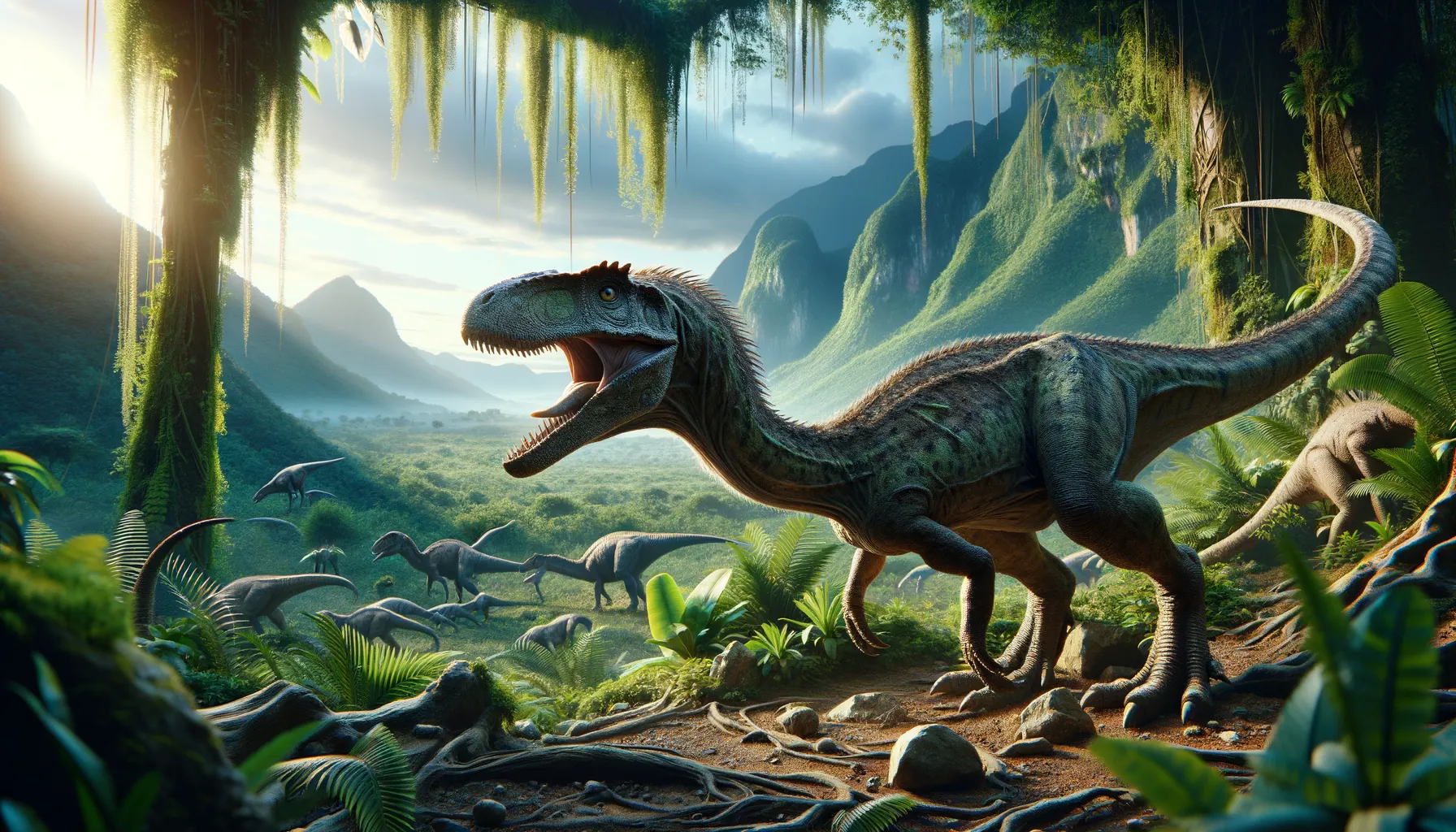
Lepidus
Swift predator of the Triassic era.
Period
triassic
Length
About 2 meters from head to tail.
Height
Approximately 1 meter tall at the hip.
Weight
An estimated 10 to 20 kilograms.
Lepidus was a small, early carnivorous dinosaur that roamed the earth during the Late Triassic period. Known for its agility, it likely fed on smaller vertebrates and possibly insects. Its discovery has provided further insight into the evolution of early theropods, enhancing our understanding of the dinosaur family tree. This species' lightweight build and sharp teeth suggest it was a proficient hunter in its ecosystem.
Diet
Lepidus was a carnivore, primarily feeding on small vertebrates such as lizards and early mammals. Its sharp teeth indicate a diet that may have also included insects and other small prey.
Hunting
Lepidus likely employed a stalking behavior, using its agility to chase down small prey. This dinosaur's speed was advantageous in catching swift animals, and it might have ambushed prey from behind low vegetation.
Environmental challenges
During the Triassic period, Lepidus faced a rapidly changing environment with volcanic activity affecting its habitat. Adapting to a variety of terrains, from arid plains to dense forests, was crucial for survival. Competing with other emerging predatory species also posed significant challenges, requiring Lepidus to hone its hunting skills.
Speed
Relatively fast for its size, agile and quick on its feet.
Lifespan
Lived about 10 to 15 years in the wild.
First discovery
First fossils described in detail in 2022.
Fun Facts
- Lepidus was a small dinosaur that lived during the Triassic period, around 230 million years ago.
- The name 'Lepidus' means 'little' or 'charming' in Latin, reflecting its modest size.
- Lepidus was an early member of the group that eventually included large dinosaurs like sauropods.
- It was a bipedal dinosaur, meaning it walked on two legs, likely making it a swift runner.
- Fossils of Lepidus have been found in Arizona, USA, providing insights into early dinosaur evolution.
- Lepidus was probably an herbivore, feeding on plants and small insects.
- Despite its size, Lepidus played a big role in understanding prehistoric life and dinosaur development.
Growth and Development
Lepidus followed a quick growth rate, necessary to escape predation. Juveniles relied heavily on camouflage and speed to evade predators. As they matured, their size and strength increased, enhancing their role as small predators in the ecosystem.
Habitat
Living in what is now North America, Lepidus inhabited regions marked by seasonal wet and dry cycles. Fossils indicate a preference for semi-arid environments, likely near sources of water. The diverse habitat supported a wide range of prey, contributing to the survival of Lepidus.
Interaction with other species
Lepidus coexisted with early herbivorous dinosaurs, which were potential prey. It potentially competed with other small carnivores, leading to niche differentiation. Evidence suggests it avoided larger predators by relying on its speed and agility.
Natural lifespan
In the wild, Lepidus typically lived around 10 to 15 years.
Reproduction
Lepidus likely laid eggs in nests concealed with foliage for protection. Parental care after hatching is uncertain, but juveniles were likely left to fend for themselves soon after birth. Seasonal breeding patterns may have been linked to food availability and climate conditions.
Social behaviour
Lepidus may have exhibited solitary behavior, especially during hunting. However, some evidence suggests possible group interactions during nesting or in environments with abundant prey. Behavioral flexibility allowed it to adapt to changing social dynamics.
Fossil locations
Fossils of Lepidus have been primarily found in the southwestern United States. These discoveries were concentrated in areas that are now arid but were once significantly wetter. Fossil sites offer valuable insights into the paleoenvironment and the adaptation strategies of different species during the Triassic period.
